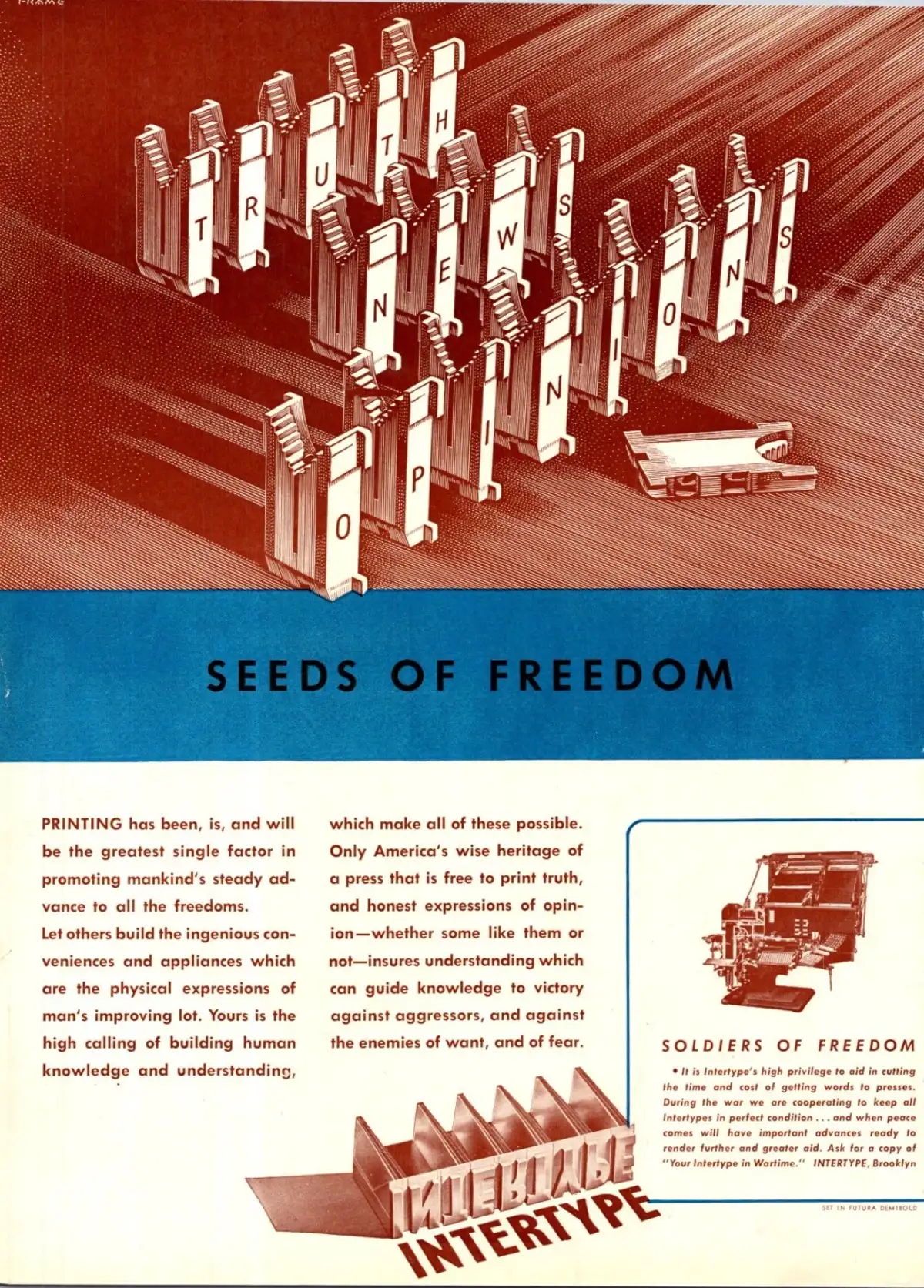
Print ads from Intertype, which appeared in the “Inland Printer” on the theme of Freedom of the Press.
The ads are typical WWII patriotic propaganda that was found in the advertising of many, many companies.
Yesterday’s Technology . . . Today!

Print ads from Intertype, which appeared in the “Inland Printer” on the theme of Freedom of the Press.
The ads are typical WWII patriotic propaganda that was found in the advertising of many, many companies.
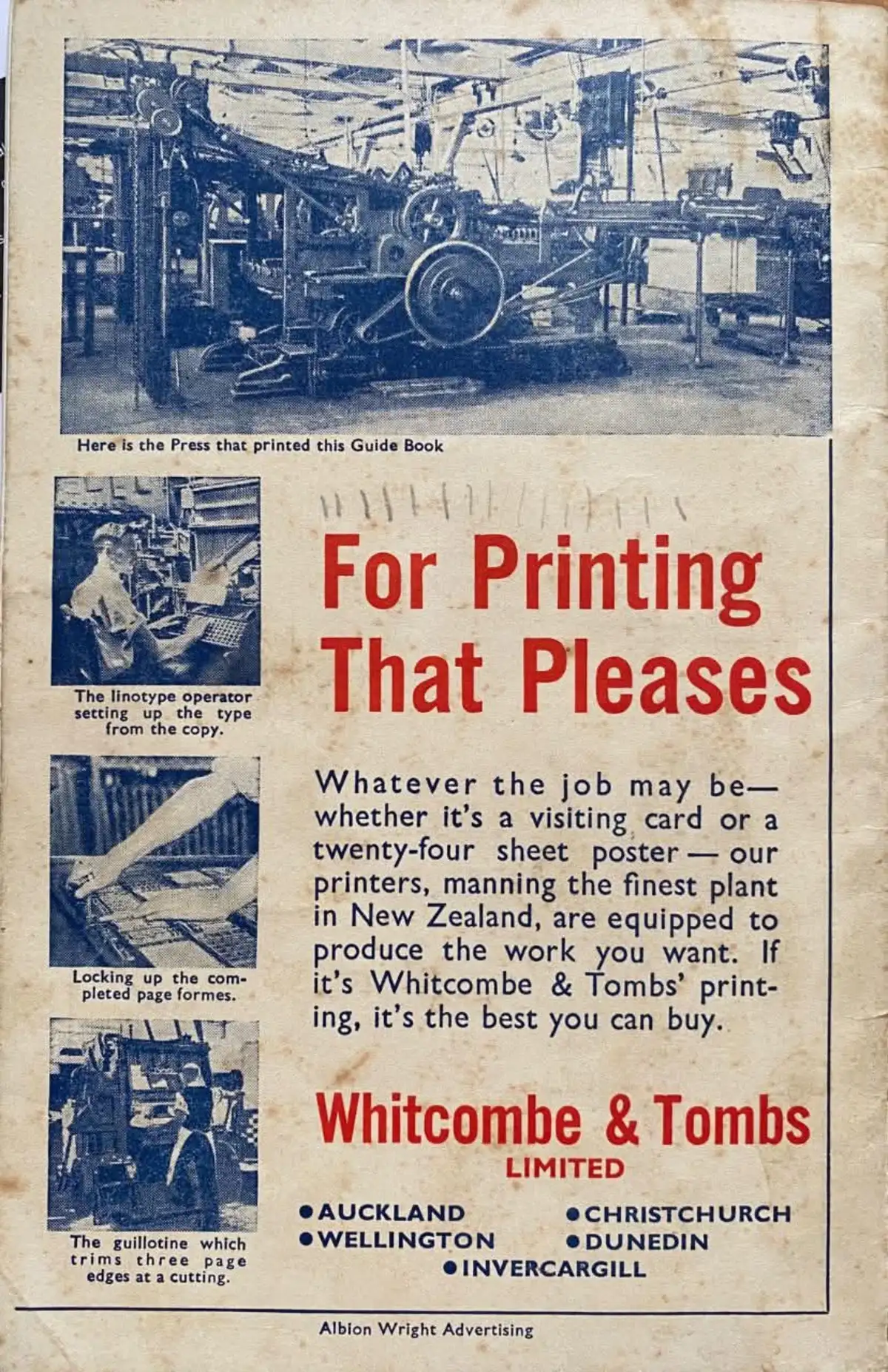
Thanks to Metal Type contributor Graeme How for sending in this advertisement from the 1930s.
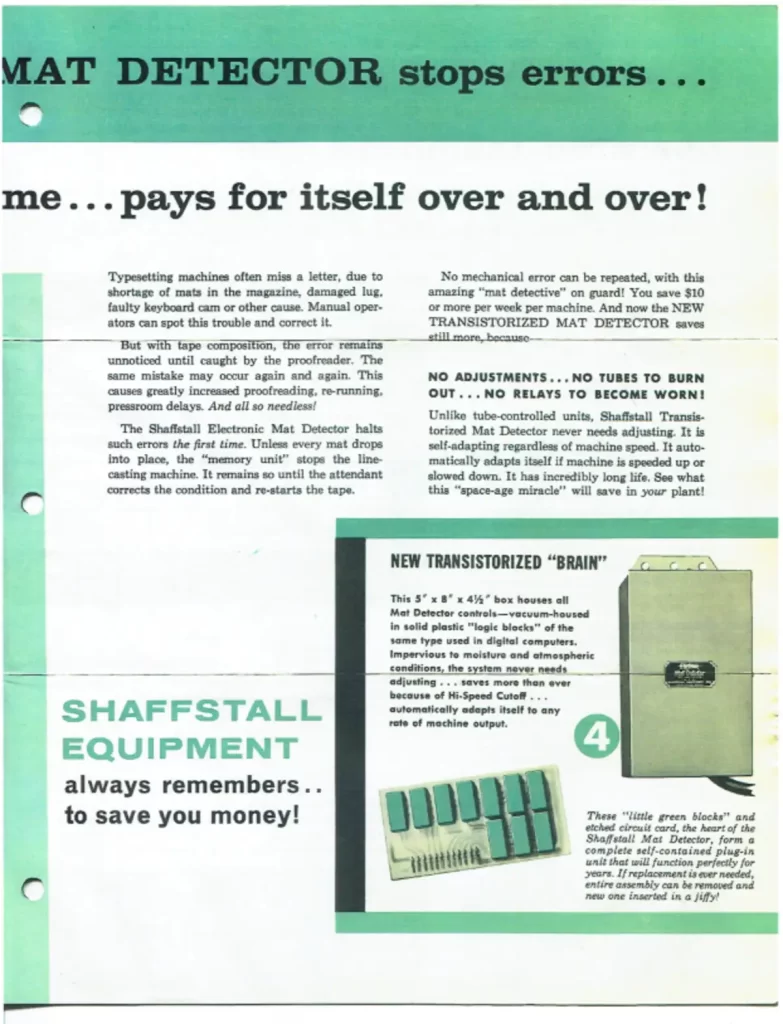
Many thanks to Anthony Shaffstall (the son of the inventor of this device) for sending in this 1960 advertising material.
Said Tony: “When I was a kid I accompanied my dad to many newspapers in the area where he would, late in the evening, install these devices on the Mergs. I was in grade school and didn’t understand what he did but I was mesmerised watching those machines run — still am.”
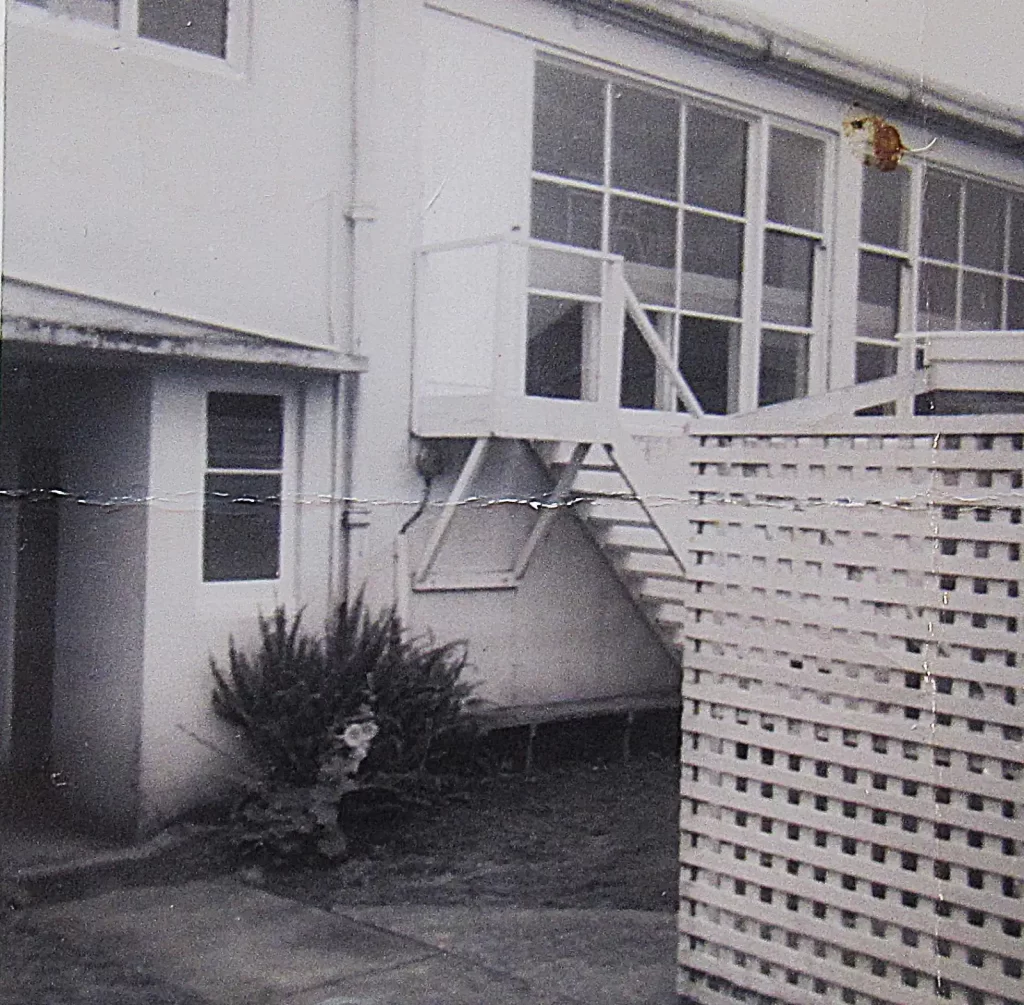
Many thanks to Graeme How for sending these pictures in. Said Graeme: “I found these photos I captured while attending the New Zealand School of Printing at Orekei, Auckland, New Zealand, the year being 1971.
“All letterpress apprentice Printers had to attend the school once a year for two weeks during the first three years of their apprenticeship.
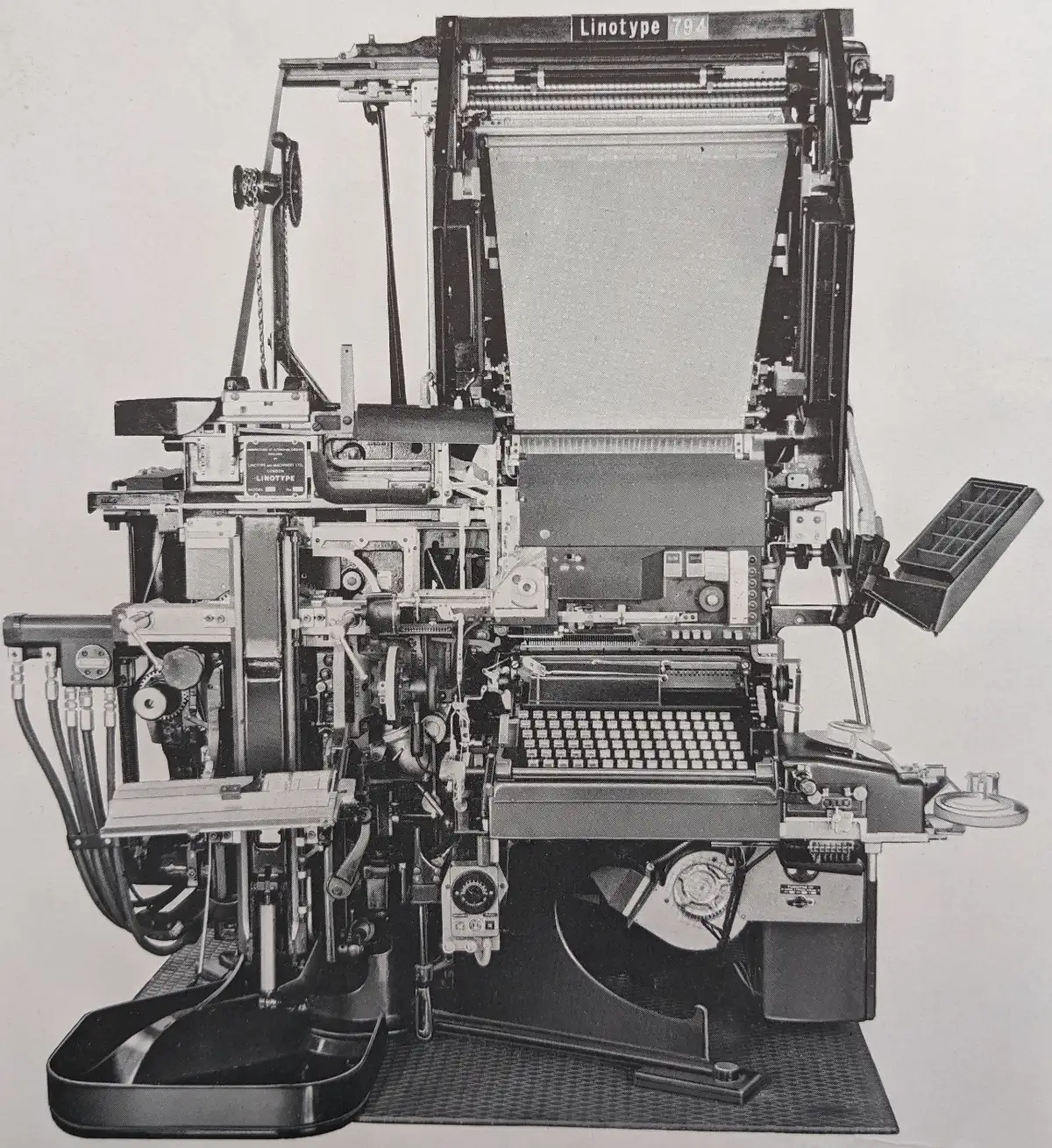
The ‘794’ has been designed to meet the particular requirements of large newspaper offices. It will become the standard all-purpose ‘Linotype’ for three very good reasons.
Reliability
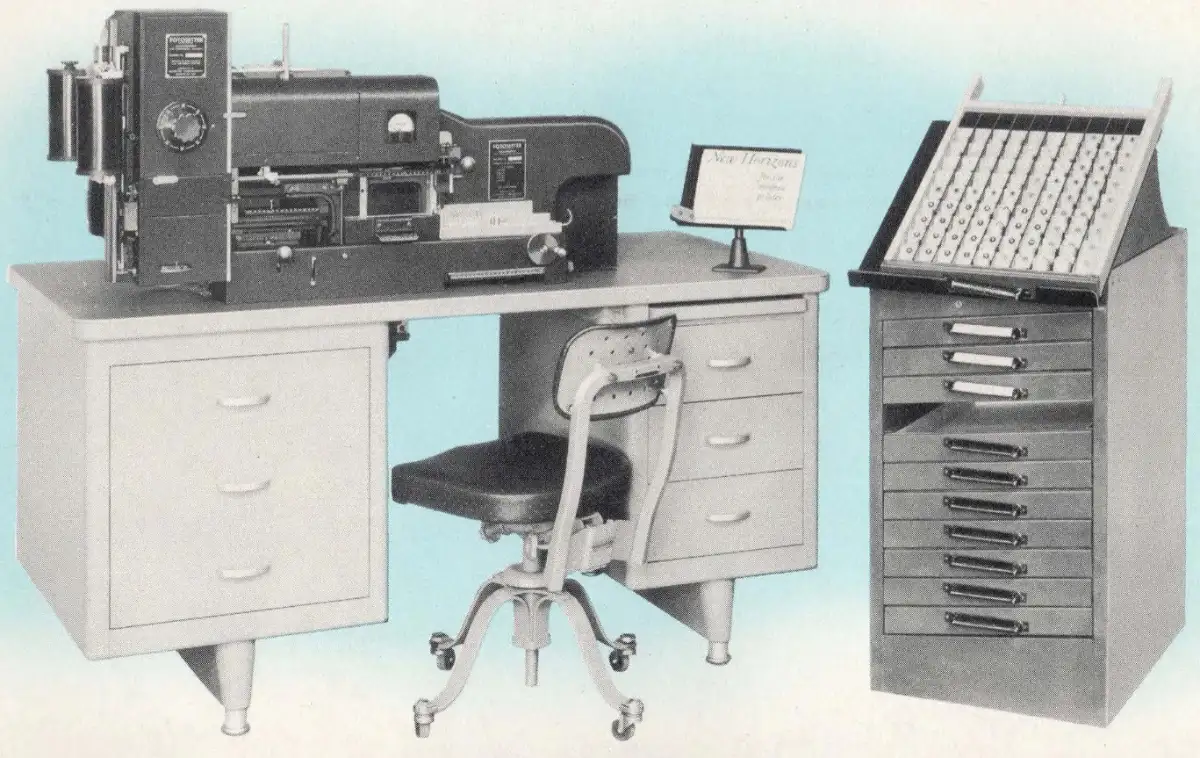
This machine was intended to produce display lines of type, such as newspaper headlines, as a Ludlow Typograph set-up would have done in a hot metal shop.
It was also suggested in the publicity material that it would also be useful for setting languages such as Chinese and Japanese, where the number of characters used was greater than the number of keys on the Intertype Fotosetter.

The illustrations on this page are from the Ottmar Mergenthaler Museum, digitised by Doug Wilson.
You can read more about how Doug came across these images on the Metal Type forum here: Linotype: The Book.

Many thanks to Rocky Baranowski, from Arizona USA, for sending in these pictures from his collection.
These gifts would have been given away at trade shows and exhibitions early in the 20th Century.

Many thanks to Graeme How, from New Zealand for sending in this illustrated article.
Machinery In The Modern Printing Plant of the ‘Northland Age’ –

Many thanks to Bill Westland for sending in these great photographs. They were taken at the Rochester Times-Union and Rochester Democrat and Chronicle newspapers before computerisation.
A well-dressed Linotype operator